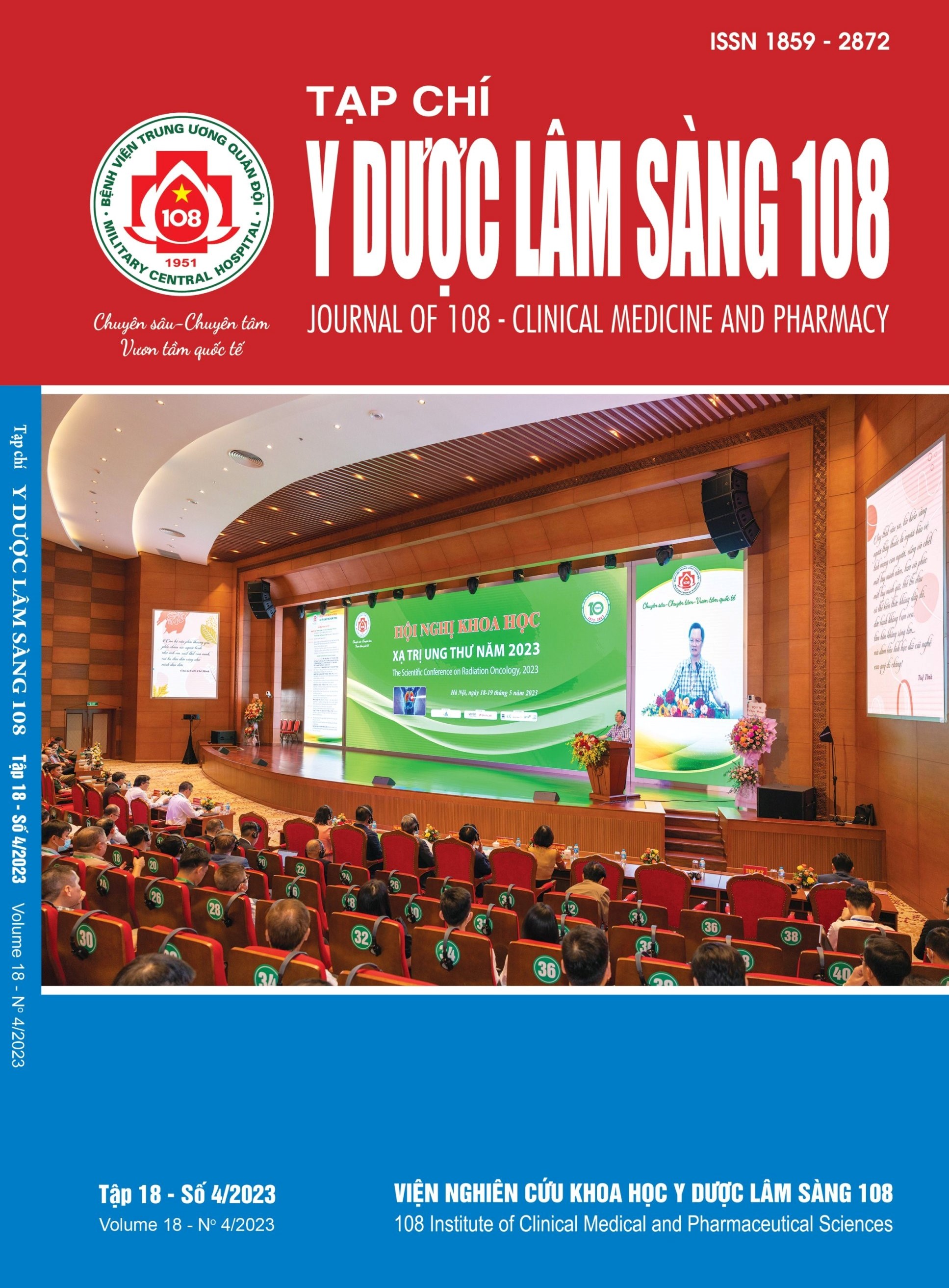Prevalence and risk factors of cytomegalovirus infection in patients after living donor liver transplantation
Main Article Content
Keywords
Abstract
Objective: To survey CMV infection rate and risk factors after living donor liver transplantation. Subject and method: Retrospective study of 151 patients who underwent living - donor liver transplantation from October 2017 to January 2023 at 108 Military Central Hospital. Result: The median age was 55 (19-75), 85.4% of patients were male, the median BMI was 23.12 (16.38-40.3), the median MELD score was 21 (6-44); CMV seropositive were 100% of the recipient and 98% of the donor. 8 of 151 patients experienced CMV infection (5.29%), in a univariate Cox propotional hazards model analysis, a prolonged post - transplant ICU length of stay was associated with an increased risk of CMV infection. Conclusion: CMV infection is the most common opportunistic infection in liver transplant patients. Therefore, it is necessary to have early diagnosis and the right treatment regimen to reduce the rate of complications and mortality after liver transplantation.
Article Details
References
2. Lizaola-Mayo BC, Rodriguez EA (2020) Cytomegalovirus infection after liver transplantation. World J Transplant 10(7): 183-190.
3. Ljungman P, Boeckh M, Hirsch HH, Josephson F, Lundgren J, Nichols G et al (2017) Definitions of cytomegalovirus infection and disease in transplant patients for use in clinical trials: Table 1. Snydman DR, editor. Clin Infect Dis 64(1): 87-91.
4. Paya CV, Marin E, Keating M, Dickson R, Porayko M, Wiesner R (1993) Solid organ transplantation: results and implications of acyclovir use in liver transplants. J Med Virol 1: 123-127.
5. Zuhair M, Smit GSA, Wallis G, Jabbar F, Smith C, Devleesschauwer B et al (2019) Estimation of the worldwide seroprevalence of cytomegalovirus: A systematic review and meta-analysis. Rev Med Virol 29(3): 2034.
6. Yadav SK, Saigal S, Choudhary NS, Saha S, Kumar N, Soin AS (2017) Cytomegalovirus infection in liver transplant Recipients: Current approach to diagnosis and management. J Clin Exp Hepatol 7(2): 144-151.
7. Bruminhent J, Thongprayoon C, Dierkhising RA, Kremers WK, Theel ES, Razonable RR (2015) Risk factors for cytomegalovirus reactivation after liver transplantation: Can pre-transplant cytomegalovirus antibody titers predict outcome? Liver Transpl 21(4): 539-546.
8. Singh N, Wannstedt C, Keyes L, Wagener MM, Cacciarelli TV (2005) Who among cytomegalovirus-seropositive liver transplant recipients is at risk for cytomegalovirus infection? Liver Transplant Off Publ Am Assoc Study Liver Dis Int Liver Transplant Soc 11(6):700-704.
9. Dahiya D, Lee CF, Chan KM, Wu TJ, Chou HS, Cheng SS et al (2011) A short-term preemptive treatment for cytomegalovirus infection in seropositive patients after liver transplantation. J Hepato-Biliary-Pancreat Sci 18(1): 32-38.
10. Yim SH, Choi MC, Kim DG, Min EK, Lee JG, Joo DJ, et al (2023) Pathogens. 12(4): 521.
11. Busch CJ, Siegler BH, Werle H, Lichtenstern C, Bruckner T, Heininger A et al (2018) Risk factors for early viral infections after liver transplantation. Langenbecks Arch Surg 403(4): 509-519.
 ISSN: 1859 - 2872
ISSN: 1859 - 2872
